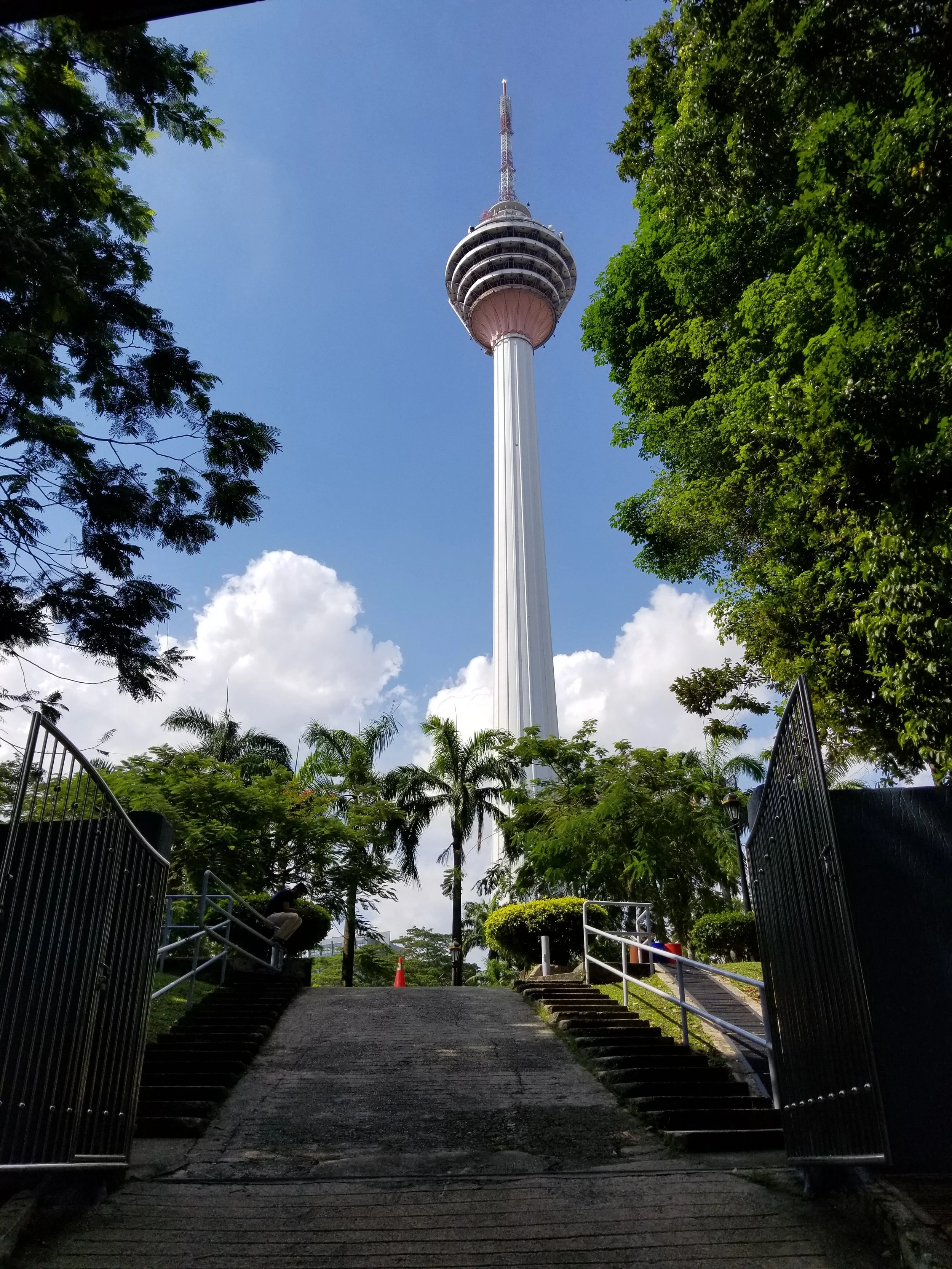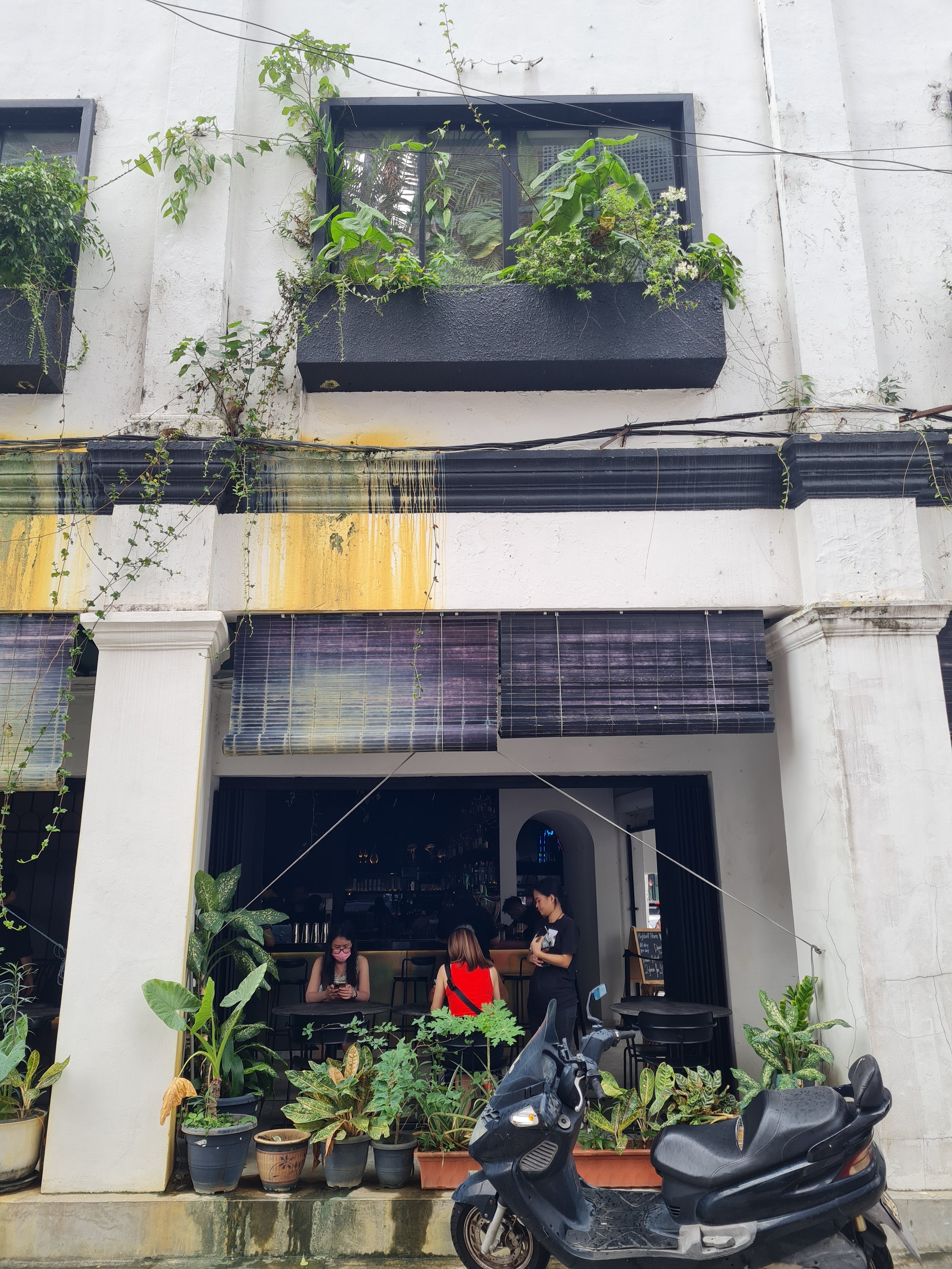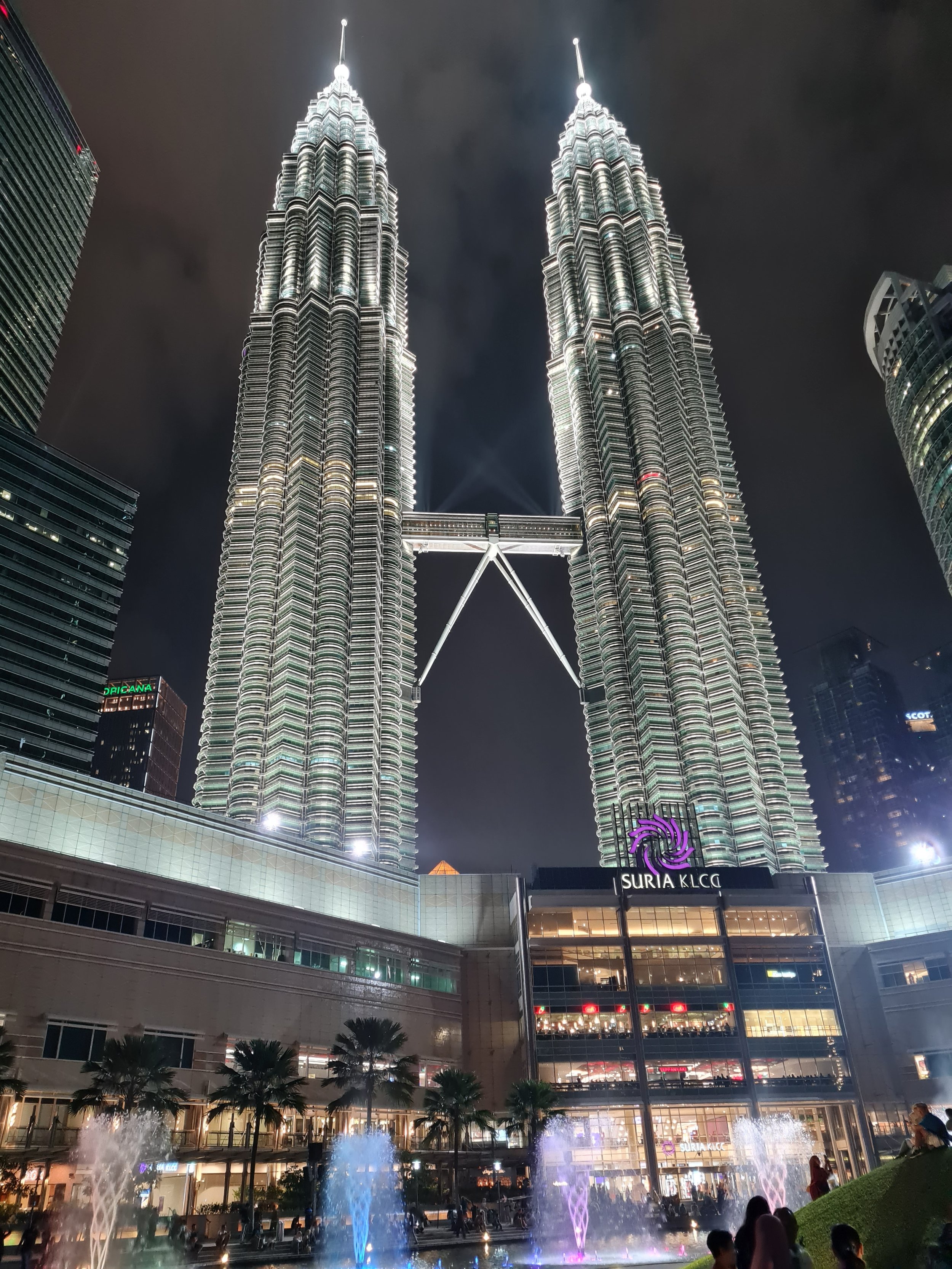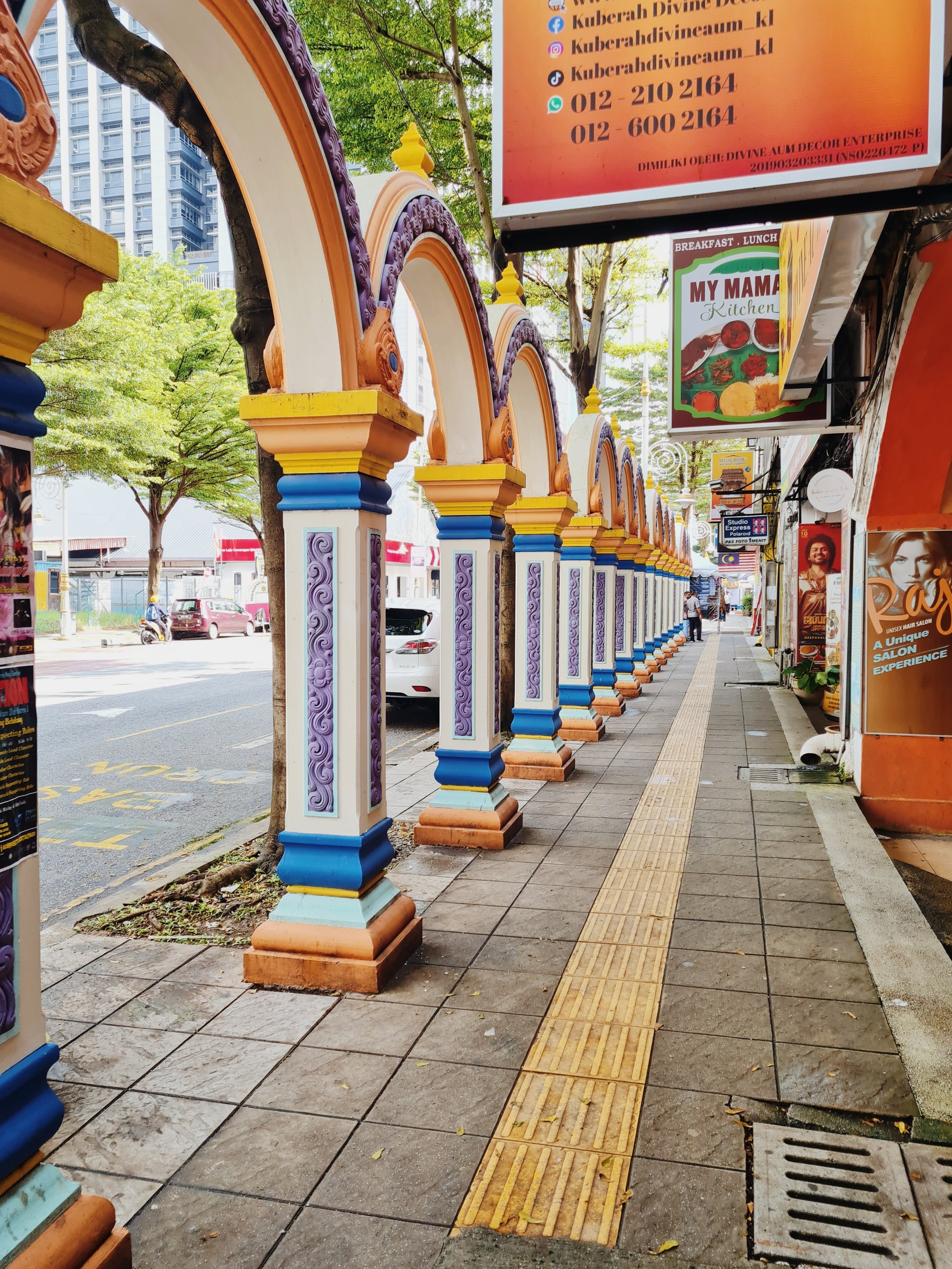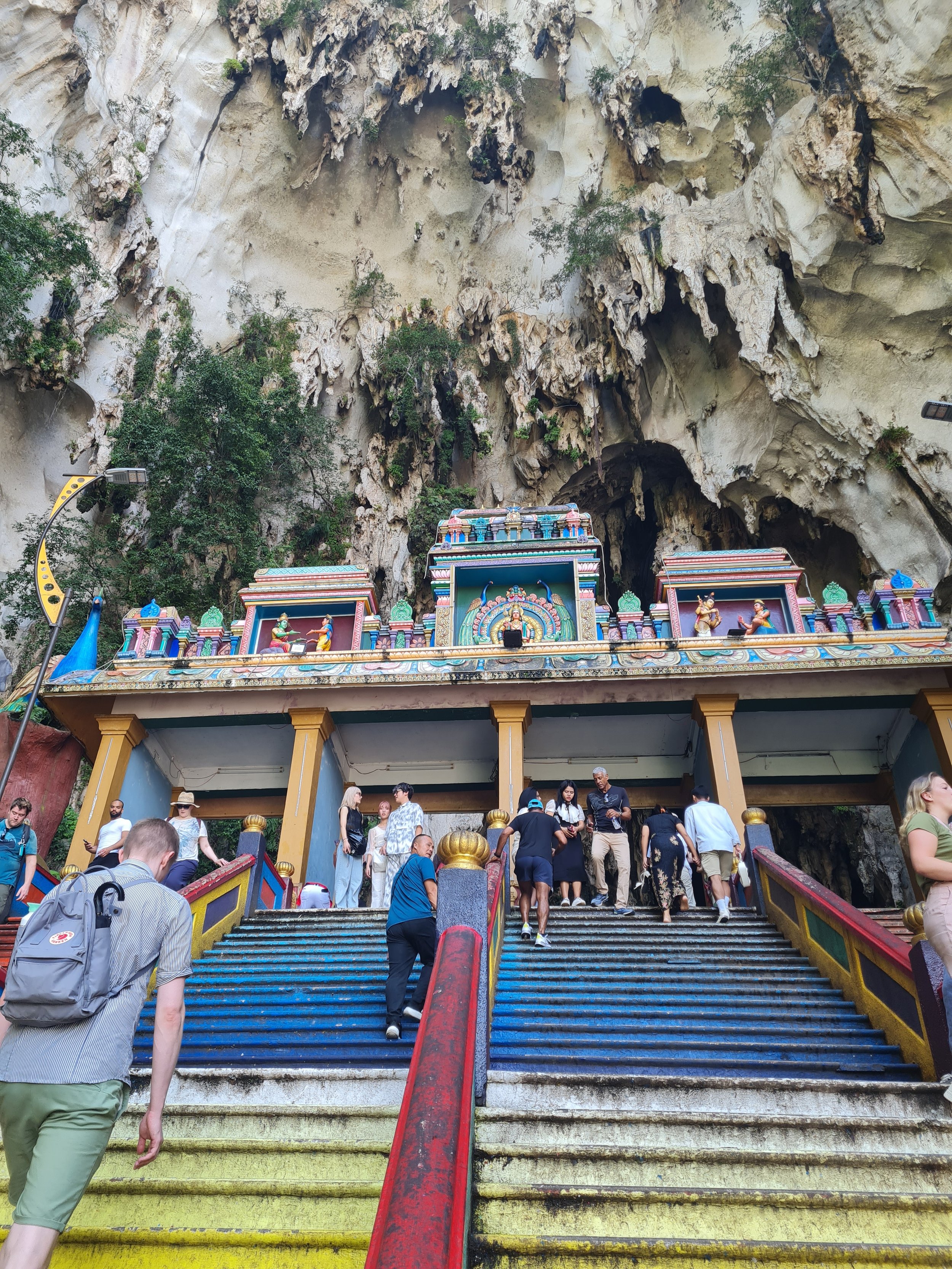Malaysia
A country known for its flavoursome street food, come for its warm water beaches, sky-scraper buildings, and wildlife that reaches from the rainforest to the cities.
Malaysia is the home country of my mother, the Asian to my Blasian. I have a lot of family who live here, mostly in Kuala Lumpur. As such, I come back to Malaysia fairly often - what used to be once every two years, but more recently every year.
Trips to Malaysia usually consist of staying in Kuala Lumpur, close to family, for 2 weeks, with a ‘long weekend’ trip in the middle of my stay to neighbouring countries or areas in Malaysia that are further afield. These ‘long weekend’ trips include visiting Indonesia, Singapore, and Northern Malaysian islands like Langkawi and Redang.
In Kuala Lumpur I spend most of my time visiting family, eating and shopping. It’s become a second home to me, and returning to Kuala Lumpur, like any second home, you just want to go to your favourite places, run your local errands, and check out what’s new. I also often try to fit in a couple day trips or overnight trips out of the city to nearby smaller towns/villages and attractions.
Malaysia travel itinerary
I’ve got years of visits to build my recommendations from. My suggestion for an itinerary would be to spend a good couple of days in Kuala Lumpur, and then to visit at least one old colonial town (Penang or Melaka), a beach island, and a forest/mountain town. Most of these destinations will require you to travel through Kuala Lumpur to reach them if using public transport, although of course private transfers will be able to take you directly and should be easy to book as these are popular destinations.
Kuala Lumpur: International flights fly into KLIA (Kuala Lumpur International Airport). The airport is quite far out from the city, about 45mins by train, and maybe an hour by car without traffic, but there is almost always traffic. My suggestion would be to take the train unless you are travelling in very early morning. I would suggest at least 2-3 days here to cram everything in.
Colonial towns
Penang: From Kuala Lumpur you can take a train or a coach up to Penang. The train runs from a central city stations and takes about 4.5 hours direct. Alternatively, a bus runs from the bus station, Terminal Bersepadu Selatan (TBS), which is on the outskirts of the city (accessible by metro/tram) and takes 6-8 hours direct. You should probably book in advance as it is quite a popular route.
Melaka: From Kuala Lumpur you can take a bus to Melaka from the bus station, Terminal Bersepadu Selatan (TBS). The bus takes about 3 hours direct and runs very regularly. You can usually buy a ticket on the day at the station, although you not be able to board the soonest coach. If you want a certain time, you can book online through third-party websites.
Beaches
Langkawi: You can fly to Langkawi from Kuala Lumpur (KLIA) and land on the island directly, or you can take a boat from Penang (3h), Kuala Kedah (1h 45), or Kuala Perlis (1h 15).
Redang Island: You will need to get to Kampung Merang and take a boat from there. You can fly from Kuala Lumpur to Kuala Terengganu, and then take a bus or drive to Kampung Merang (45 mins). Some accommodations on the island will help organise transfers from Kuala Terengganu, or you can book transport with a travel agency if you’d rather not organise the legs yourself.
Perhentian Islands: You will need to get to Kuala Besut and take a boat from there. You can reach Kuala Besut from Kuala Lumpur by bus (6-8h) from Terminal Bersepadu Selatan (TBS) or you can fly from Kuala Lumpur to Kuala Terengganu and then take a bus or drive to Kuala Besut (2h). Some accommodations on the island will help organise transfers from Kuala Terengganu, or you can book transport with a travel agency if you’d rather not organise the legs yourself. The Perhnetian Islands are often part of multi-destination tours with travel agencies.
Forests & mountains
Cameron Highlands: From Kuala Lumpur you can take a bus to Cameron Highlands from Terminal Bersepadu Selatan (TBS). Alternatively, you can drive or book a transfer (3.5h). Many travel companies offer round-trip tours, or as part of an itinerary that also includes Taman Negara. Cameron Highlands can also be reached by car/transfer from Ipoh and Kampar (2h).
Taman Negara: You can catch a bus to Jerantut. A direct bus runs from Kuala Lumpur from the Perkeliling Bus Terminal. From Jerantut you can then take a direct bus to Kuala Tahan (1h), the main town for Taman Negara, or a direct bus/taxi to Kuala Tembeling jetty (20 mins) where you can catch a long boat to take you along the river to Kuala Tahan (2.5h). Alternatively, you can book transfers with travel agencies and will have the option to go completely by car direct to Kuala Tahan, or with the boat option at Kuala Tembeling. I’d recommend taking the boat option for at least one leg of your journey, it’s a nice experience to see wildlife and laze along the river.
How to travel around
In Kuala Lumpur, it’s easy to get around the city via train (metro, monorail, train), bus, taxi and Grab (e-hailing). I don’t recommend walking as many roads are large busy highways without consistent pavements. I generally prefer to take a Grab car out of convenience since it’s so affordable, but traffic can be bad in Kuala Lumpur, and what may appear to be a time-saving journey by car could turn into 40 minutes stuck in traffic. The public transport system in Kuala Lumpur is mainly run by Rapid KL. Service is good, fairly frequent, and run between 6am-12am every day. As a tourist you will have to purchase your fares using cash unless you buy a travel card that is valid for a set number of days (MyCity or My50). Cashless ways of payment are through Touch N Go or MyKad services that require registration and are not really appropriate for tourists visiting for a short period. For travel out of the city you can buy bus and train tickets at the main transit stations, or online. For bus tickets, this can often be done through third-party companies like 12Go and redBus.
In Malaysia, the ride-hailing service available is called Grab. Grab is cheap and readily available in most areas. Often taking a Grab car is cheaper than public transport if you are travelling with more than one person. You can choose to pay in cash in person at the end of the ride or with card through the app.
As a traveller, I’m very used to walking some distance to different destinations. However in Malaysia it’s a little harder to do this. Many of the roads are large highways without pavement. This isn’t always recognised on online maps and they may direct you onto potentially dangerous roads. Exercise caution when considering walking to a destination rather than taking transport.
Across the rest of the country, public transport is pretty good and you can travel to most places across the country via bus or train for a very affordable price. What’s more, they are very comfortable and will often include reclining seats and air conditioning at a minimum. You can see the intercity train lines here. For bus trips, search routes through third-party companies as above.
Terminal Bersepadu Selatan, Kuala Lumpur Bus companies at Terminal Bersepadu Selatan.What to eat in Malaysia
Food in Malaysia is so good I’ve dedicated a whole page to it.
And everything else
Money: Ringgit is currency in Malaysia. Cash is readily used and will be required for some restaurants, most street foods / hawker stalls, public toilets, public transport and more rural areas. Make sure you always have cash on you, and it will be most useful to have small change available. In towns and cities, cashpoints will be easier to find, but in more rural areas it is not always possible, so be prepared.
Language: There are many languages spoken in Malaysia including Malay, Mandarin, and Tamal. However, English is spoken by basically everyone, being previously colonised by The British Empire.
Safety: Malaysia is a safe country. Busy tourist areas do have high cases of pick-pocketing, but there are few violent crimes against tourists. I generally feel safe walking around Kuala Lumpur and exercise the same amount of caution I would anywhere in the world in busy areas, or areas I’m unfamiliar with. Malaysia is officially a Muslim country, and as such does have some conservative laws. However, there are large populations of non-Muslims living in Malaysia, and so some of the fundamental beliefs around these conservative laws are not necessarily shared by the majority of the population. There are anti-LGBTQ+ laws in place in Malaysia, and you should be mindful of this. But there is also fair LGBTQ+ scene in Kuala Lumpur. Tourists are unlikely to be persecuted around this, but I would (unfortunately) advise discretion.
Need to knows
Malaysia is made up of 3 main cultural populations: Malay, Chinese and Indian. It also has 3 main religions: Islam, Buddhism and Hinduism. There are many public holidays surrounding different religious festivals so keep an eye out when planning your travels - both for an opportunity to join in festivities and to consider your travel plans.
Special Recommendations
Food: Roti canai
Attractions: Northern beach islands
Accommodation: Alila Bangsar
R’s take
Malaysia is a multi-cultural, multi-ethnic country. Whilst I’m sure different ethnicities hold different prejudices about each other, the multi nature of the country means I generally feel quite safe and comfortable here.

